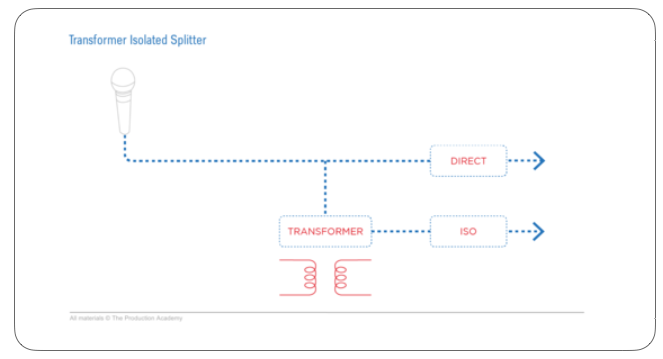019 – Transformer Isolated Splitters
A transformer isolated splitter keeps the mixing consoles electronically isolated, but causes issues with phantom power.
Written by Scott Adamson
When we get to the size of production that requires a separate console for the monitors, we also need an audio splitter. This takes the Inputs from stage and splits them to both the FOH and Monitor consoles. There are a few methods for doing this, but the one I prefer for live music is a transformer isolated splitter.
Learn more in this video from our Live Sound Essentials course:
Get real-world live sound mixing tips straight to your inbox.
In a passive splitter no active electronics are involved. With a standard (parallel) passive split, the input is wired directly to two outputs. But this direct connection means the two consoles end up being electronically connected to each other. This can affect the impedance of the mic or DI coming from stage.
So, we can use a transformer to isolate them. This is made of two coils of wire which are able to transfer an audio signal without actually touching, which keeps them electronically isolated. This way, one of the consoles gets the direct out, the other one gets the isolated out, and they won’t affect the impedance of the input.
The main concern with this is phantom power. Even though a transformer can pass our audio signal, it can’t pass direct current, which is what phantom power is. So, we can only send phantom from the console connected to the direct out of the split. And to keep the distance short, it’s common to do this from the monitor console.
Also, transformers can get expensive. They aren’t that cheap to make and when you have 48 channels in a splitter, this adds up quickly. But even though it’s not totally ideal, you can still get great results from either a parallel passive split or an active one. I just prefer to NOT use active splitters because it takes extra variables out of the equation. And with the fast workflow of live music, it’s better to avoid any potential problems.
As an example of a nice concert-grade splitter, take a look at this Whirlwind. It has an extra isolated output, which can be connected to a third console for recording or live broadcast. Plus, high quality products like this are robust enough to last for many, many years.





